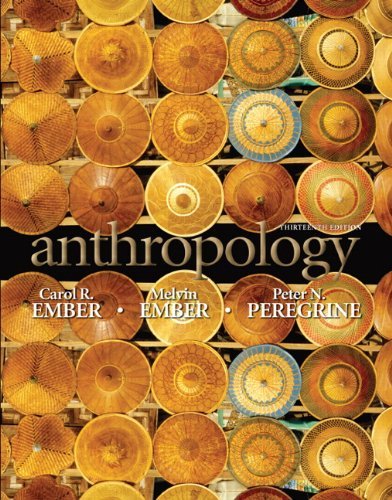

Anthropology, provides its readers with a comprehensive and scientific introduction to the four fields of anthropology. It helps them understand humans in all their variety, and why such variety exists. This new thirteenth edition places an increased emphasis on immigration, migration and globalization. It also showcases how anthropological skill sets can be applied beyond academia.
About the Author
Carol R. Ember started at Antioch College as a chemistry major. She began taking social science courses because some were required, but she soon found herself intrigued. There were lots of questions without answers, and she became excited about the possibility of a research career in social science. She spent a year in graduate school at Cornell studying sociology before continuing on to Harvard, where she studied anthropology primarily with John and Beatrice Whiting. For her Ph.D. dissertation she worked among the Luo of Kenya. While there she noticed that many boys were assigned "girls' work," such as babysitting and household chores, because their mothers (who did most of the agriculture) did not have enough girls to help out. She decided to study the possible effects of task assignment on the social behavior of boys. Using systematic behavior observations, she compared girls, boys who did a great deal of girls' work, and boys who did little such work. She found that boys assigned girls' work were intermediate in many social behaviors, compared with the other boys and girls. Later, she did cross-cultural research on variation in marriage, family, descent groups, and war and peace, mainly in collaboration with Melvin Ember, whom she married in 1970. All of these cross-cultural studies tested theories on data for worldwide samples of societies. From 1970 to 1996, she taught at Hunter College of the City University of New York. She has also served as president of the Society of Cross-Cultural Research and was one of the directors of the Summer Institutes in Comparative Anthropological Research, which were funded by the National Science Foundation. She is now executive director at the Human Relations Area Files, Inc., a nonprofit research agency at Yale University.
After graduating from Columbia College, Melvin Ember went to Yale University for his Ph.D. His mentor at Yale was George Peter Murdock, an anthropologist who was instrumental in promoting cross-cultural research and building a full-text database on the cultures of the world to facilitate cross-cultural hypothesis testing. This database came to be known as the Human Relations Area Files (HRAF) because it was originally sponsored by the Institute of Human Relations at Yale. Growing in annual installments and now distributed in electronic format, the HRAF database currently covers more than 370 cultures, past and present, all over the world. He did fieldwork for his dissertation in American Samoa, where he conducted a comparison of three villages to study the effects of commercialization on political life. In addition, he did research on descent groups and how they changed with the increase of buying and selling. His cross-cultural studies focused originally on variation in marital residence and descent groups. He also conducted cross-cultural research on the relationship between economic and political development, the origin and extension of the incest taboo, the causes of polygamy, and how archaeological correlates of social customs can help draw inferences about the past. After four years of research at the National Institute of Mental Health, he taught at Antioch College and then Hunter College of the City University of New York. Heserved as president of the Society for Cross-Cultural Research and was president (since 1987) of the Human Relations Area Files, Inc., a nonprofit research agency at Yale University, until his passing.
Paperback: 656 pages
Publisher: Pearson; 13 edition (February 11, 2010)
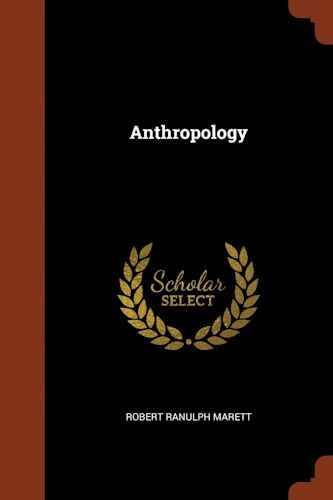

Anthropology by Robert Ranulph Marett

This work has been selected by scholars as being culturally important and is part of the knowledge base of civilization as we know it.
This work is in the public domain in the United States of America, and possibly other nations. Within the United States, you may freely copy and distribute this work, as no entity (individual or corporate) has a copyright on the body of the work.
Scholars believe, and we concur, that this work is important enough to be preserved, reproduced, and made generally available to the public. To ensure a quality reading experience, this work has been proofread and republished using a format that seamlessly blends the original graphical elements with text in an easy-to-read typeface.
We appreciate your support of the preservation process, and thank you for being an important part of keeping this knowledge alive and relevant.
Paperback: 158 pages
Publisher: Pinnacle Press (May 24, 2017)
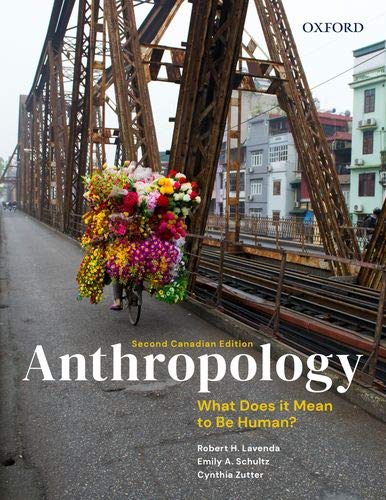

Anthropology: What Does It Mean to Be Human?

A unique alternative to more traditional, encyclopedic introductory texts, Anthropology: What Does It Mean to Be Human?, Second Edition, takes a question-oriented approach that incorporates cutting-edge theory and new ways of looking at important contemporary issues such as power, human rights, and inequality. With a total of fifteen chapters, this engaging, full-color text is an ideal one-semester overview that delves deep into anthropology without overwhelming students.
New to this Edition:
- New discussions of gender and archaeology, domestication, social organization, nutritional anthropology, and aboriginality, and significantly updated discussions of genetics and race and human origins
- Discussions of economic and political relations now appear in separate chapters
- "Anthropology in Everyday Life" boxes now appear throughout the book to continually show students the applicability of anthropology
- New "In Their Own Words" commentaries throughout
- New module on the components of language
- In addition to the running glossary, a glossary now appears at the end of the text
- "For Review" sections now appear at the end of each chapter.
About the Author
Robert H. Lavenda is Professor of Anthropology and Co-chair of the Department of Anthropology at St. Cloud State University. Emily A. Schultz is Professor of Anthropology at St. Cloud State University.
Paperback: 528 pages
Publisher: Oxford University Press; 2 edition (December 7, 2011)
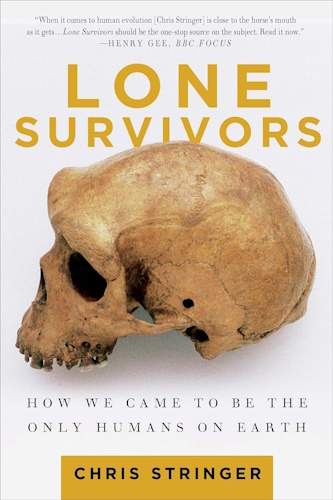

Lone Survivors: How We Came to Be the Only Humans on Earth

A leading anthropology researcher on human evolution proposes a new and controversial theory of how our species came to be.
In this groundbreaking and engaging work of science, world-renowned paleoanthropologist Chris Stringer sets out a new theory of humanity's origin, challenging both the multiregionalists (who hold that modern humans developed from ancient ancestors in different parts of the world) and his own "out of Africa" theory, which maintains that humans emerged rapidly in one small part of Africa and then spread to replace all other humans within and outside the continent. Stringer's new theory, based on archeological and genetic evidence, holds that distinct humans coexisted and competed across the African continent-exchanging genes, tools, and behavioral strategies.
Stringer draws on analyses of old and new fossils from around the world, DNA studies of Neanderthals (using the full genome map) and other species, and recent archeological digs to unveil his new theory. He shows how the most sensational recent fossil findings fit with his model, and he questions previous concepts (including his own) of modernity and how it evolved.
Lone Survivors is the definitive account of who and what we were, and will change perceptions about our origins and about what it means to be human.
About the Author
CHRIS STRINGER is the author of The Complete World of Human Evolution, Homo britannicus, and more than two hundred books and papers on the subject of human evolution. One of the world's foremost paleoanthropologists, he is a researcher at the Natural History Museum in London and a Fellow of the Royal Society. He has three children and lives in Sussex and London.
Paperback: 336 pages
Publisher: St. Martin's Griffin; First edition (July 30, 2013)
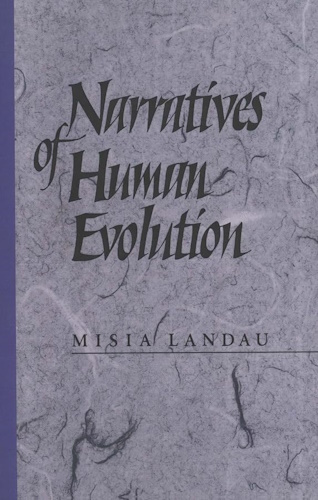

In the notoriously controversial field of paleoanthropology Misia Landau has found a hidden level of agreement among theories of human evolution. According to Landau, these theories are versions of the universal hero tale in folklore and myth. The narratives all have similar structures, featuring a humble hero (in theories of evolution it is a nonhuman primate) who departs on a journey (leaves his native habitat), receives essential aid or equipment from a donor figure (through evolutionary principles such as natural selection or orthogenesis), goes through tests (imposed by competitors, harsh climate, or predators), and finally arrives at a higher (that is, more human) state.
Analyzing classic texts on evolution by Darwin, Keith, and Elliott Smith, as well as more recent authors by scholars such as Dart, Robinson, Tobias, and Johanson, Landau reveals not only their common narrative form but also how this form accommodates differences in meaning—widely varying sequences of events, heroes, and donors. Landau shows how interpretations of the fossil record differ according to what the anthropologist believes it the primary evolutionary agent. She concludes that scientists have much to gain from an awareness that they are tellers of stories. An understanding of narrative, she argues, can provide tools for creating new scientific theories as well as for analyzing old ones. Her book will be entertaining and enlightening for both general readers and scholars.
Paperback: 215 pages
Publisher: Yale University Press; Reprint edition (March 11, 1993)
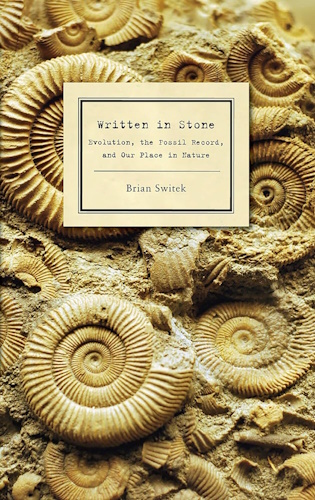

Written in Stone: Evolution, the Fossil Record, and Our Place in Nature

From Publishers Weekly
Starred Review. Beginning with a recently discovered 47-million-year-old primate fossil, Switek effectively and eloquently demonstrates the exponential increase in fossils that have been found since Darwin first published On the Origin of Species. In delightful prose, he blends information about fossil evidence with the scientific debates about how that evidence might be best interpreted. Switek, who writes the Smithsonian's Dinosaur Tracking blog, focuses on evidence for the evolution of major lineages, from reptiles to birds and from fish to tetrapods. He also explains at length how whales, horses, and humans evolved, marshaling compelling fossil evidence and combining it with information from molecular biology; at every step, he makes clear what is still unknown. He underscores that life forms have not "progressed" through evolution to end with Homo sapiens as the highest life form; rather, evolution has produced "a wildly branching tree of life with no predetermined path or endpoint." He superbly shows that "f we can let go of our conceit," we will see the preciousness of life in all its forms. 90 b&w illus. (Nov.) (c) (c) Copyright PWxyz, LLC. All rights reserved.
From Booklist
In this thoroughly entertaining science history, Switek combines a deep knowledge of the fossil record with a Holmesian compulsion to investigate the myriad ways evolutionary discoveries have been made. Just one chapter encompasses an 1817 Amazon expedition, Richard Owen and London’s Natural History Museum, the musings of Darwin, an array of late nineteenth- and twentieth-century naturalists, some digs in Greenland, and paleontologist Jenny Clack’s 1980 research in old field notebooks and a trip to the Sedgewick Museum basement. All of this leads in a roundabout way to the 2006 discovery of Tiktaalik: a fish with a critical position in the record between fins and fingers. From there Switek moves on to “footprints and feathers” and a dozen other topics that all further his mission of exploring natural history and portraying the scientists who spent their lives asking questions and finding answers. It’s poetry, serendipity, and smart entertainment because Switek has found the sweet spot between academic treatise and pop culture, a literary locale that is a godsend to armchair explorers everywhere. --Colleen Mondor
Paperback: 320 pages
Publisher: Bellevue Literary Press (November 30, 2010)
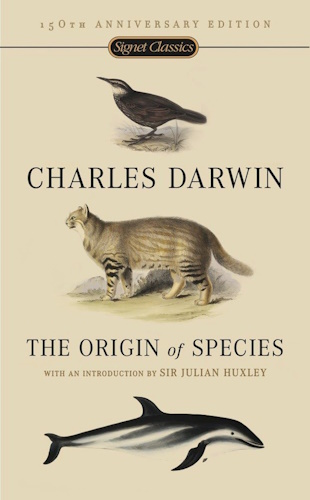

The Origin Of Species: 150th Anniversary Edition

Charles Darwin’s classic that exploded into public controversy, revolutionized the course of science, and continues to transform our views of the world.
Few other books have created such a lasting storm of controversy as The Origin of Species. Darwin’s theory that species derive from other species by a gradual evolutionary process and that the average level of each species is heightened by the “survival of the fittest” stirred up popular debate to fever pitch. Its acceptance revolutionized the course of science.
As Sir Julian Huxley, the noted biologist, points out in his illuminating introduction, the importance of Darwin’s contribution to modern scientific knowledge is almost impossible to evaluate: “a truly great book, one which can still be read with profit by professional biologist.”
Includes an Introduction by Sir Julian Huxley
About the Author
Charles Robert Darwin was born in 1809 in Shrewsbury, England. At Cambridge University he formed a friendship with J. S. Henslow, a professor of botany, and that association, along with his enthusiasm for collecting beetles, led to “a burning zeal,” as he wrote in his Autobiography, for the natural sciences. A voyage to the Southern Hemisphere on the H.M.S. Beagle between 1831 and 1836 would lay the foundation for The Origin of Species, published in 1859. His other works include The Descent of Man, and Selection in Relation to Sex (1871) and Recollections of My Mind and Character, also titled Autobiography (1887). Charles Darwin’s Diary of the Voyage of the H.M.S. Beagle was published posthumously in 1933.
Paperback: 576 pages
Publisher: Signet; Reprint, Anniversary edition (September 2, 2003)
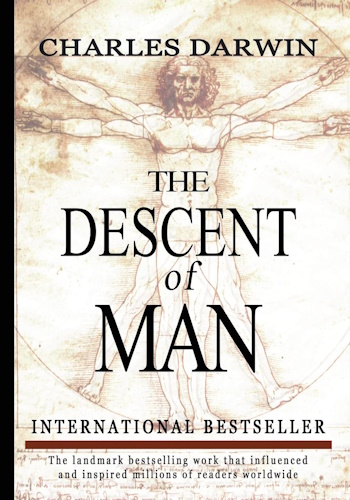

The Descent of Man, Darwin's second landmark work on evolutionary theory (following The Origin of the Species), marked a turning point in the history of science with its modern vision of human nature as the product of evolution. Darwin argued that the noblest features of humans, such as language and morality, were the result of the same natural processes that produced iris petals and scorpion tails.
About the Author
Charles Robert Darwin, (/ˈdɑːrwɪn/; 12 February 1809 – 19 April 1882) was an English naturalist and geologist, best known for his contributions to evolutionary theory. He established that all species of life have descended over time from common ancestors, and in a joint publication with Alfred Russel Wallace introduced his scientific theory that this branching pattern of evolution resulted from a process that he called natural selection, in which the struggle for existence has a similar effect to the artificial selection involved in selective breeding.
Paperback: 136 pages
Publisher: CreateSpace Independent Publishing Platform (June 28, 2011)
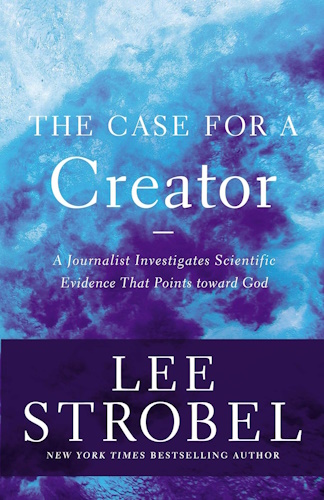

“My road to atheism was paved by science . . . But, ironically, so was my later journey to God.” —Lee Strobel During his academic years, Lee Strobel became convinced that God was outmoded, a belief that colored his ensuing career as an award-winning journalist at the Chicago Tribune. Science had made the idea of a Creator irrelevant—or so Strobel thought. But today science is pointing in a different direction. In recent years, a diverse and impressive body of research has increasingly supported the conclusion that the universe was intelligently designed. At the same time, Darwinism has faltered in the face of concrete facts and hard reason. Has science discovered God? At the very least, it’s giving faith an immense boost as new findings emerge about the incredible complexity of our universe. Join Strobel as he reexamines the theories that once led him away from God. Through his compelling and highly readable account, you’ll encounter the mind-stretching discoveries from cosmology, cellular biology, DNA research, astronomy, physics, and human consciousness that present astonishing evidence in The Case for a Creator. Also available in mass market and audio CD editions.
Hardcover: 352 pages
Publisher: Zondervan; Book Club edition (March 23, 2004)
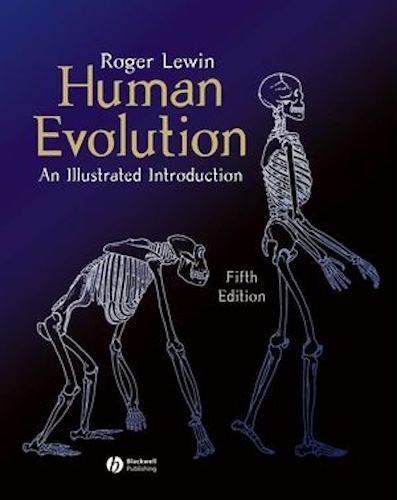

Human Evolution: An Illustrated Introduction

Human Evolution is a best-selling book ideal for anyone hoping to learn more about the field. The book places human evolution in the context of humans as animals, while also showing the physical context of human evolution, including climate change and the impact of extinctions. Chapter introductions, numerous drawings and photographs, and an essential glossary all add to the accessibility of this text. The fifth edition has been thoroughly updated to include coverage of the latest discoveries and perspectives, including new early hominin fossils from Africa and Georgia and their implications, new archaeological evidence from Africa on the origin of modern humans, updated coverage of prehistoric art, and new perspectives on molecular evidence and their implications for human population history.
Paperback: 284 pages
Publisher: Wiley-Blackwell; 5 edition (September 17, 2004)


The Secret History of the World and How to Get Out Alive

Previously published as Ancient Science, Secret History contains 150 pages of new material. The Secret History of The World and How To Get Out Alive is the definitive book of the real answers where Truth is more fantastic than fiction.
Laura Knight-Jadczyk, wife of internationally known theoretical physicist, Arkadiusz Jadczyk, an expert in hyperdimensional physics, draws on science and mysticism to pierce the veil of reality. With sparkling humour and wisdom, she picks up where Fulcanelli left off, sharing over thirty years of research to reveal, for the first time, The Great Work and the esoteric Science of the Ancients in terms accessible to scholar and layperson alike.
Conspiracies have existed since the time of Cain and Abel. Facts of history have been altered to support the illusion. The question today is whether a sufficient number of people will see through the deceptions, thus creating a counter-force for positive change - the gold of humanity - during the upcoming times of Macro-Cosmic Quantum Shift.
Laura argues convincingly, based on the revelations of the deepest of esoteric secrets, that the present is a time of potential transition, an extraordinary opportunity for individual and collective renewal: a quantum shift of awareness and perception which could see the birth of true creativity in the fields of science, art and spirituality.
The Secret History of the World allows us to redefine our interpretation of the universe, history, and culture and to thereby navigate a path through this darkness. In this way, Laura Knight-Jadczyk shows us how we may extend the possibilities for all our different futures in literal terms. With over 800 pages of fascinating reading, The Secret History of The World and How to Get Out Alive is rapidly being acknowledged as a classic with profound implications for the destiny of the human race. With painstakingly researched facts and figures, the author overturns long-held conventional ideas on religion, philosophy, Grail legends, science, and alchemy, presenting a cohesive narrative pointing to the existence of an ancient techno-spirituality of the Golden Age which included a mastery of space and time: the Holy Grail, the Philosopher's Stone, the True Process of Ascension.
Laura provides the evidence for the advanced level of scientific and metaphysical wisdom possessed by the greatest of lost ancient civilizations - a culture so advanced that none of the trappings of civilization as we know it were needed, explaining why there is no 'evidence' of civilization as we know it left to testify to its existence. The author's consummate synthesis reveals the Message in a Bottle reserved for humanity, including the Cosmology and Mysticism of mankind Before the Fall when, as the ancient texts tell us, man walked and talked with the gods. Laura shows us that the upcoming shift is that point in the vast cosmological cycle when mankind - or at least a portion of mankind - has the opportunity to regain his standing as The Child of the King in the Golden Age. If ever there was a book that can answer the questions of those who are seeking Truth in the spiritual wilderness of this world, then surely The Secret History of the World and How to Get Out Alive is it.
About the Author
Laura Knight-Jadczyk is a historian and author of 14 books that span many disciplines including history, psychology, spirituality and politics. Underpinning all of Laura's work is a powerful drive to discover the Truth, whatever that Truth might be. In her unique approach to research, everything is challenged and no official 'truth', no official version of events, is too sacrosanct to be exempted from rigorous testing. As she pursues her goal to uncover the solutions to the problems of Humankind, it is her love and respect for the Truth that makes her a truly peerless researcher and author.
Paperback: 807 pages
Publisher: Red Pill Press; Second edition edition (December 1, 2005)


UFOs and the National Security State: Chronology of a Coverup, 1941-1973

Richard M. Dolan is a gifted historian whose study of U.S. Cold War strategy led him to the broader context of increased security measures and secrecy since World War II. One aspect of such government policies that has continued to hold the public's imagination for over half a century is the question of unidentified flying objects.
UFOs and the National Security State is the first volume of a two-part detailed chronological narrative of the national security dimensions of the UFO phenomenon from 1941 to the present. Working from hundreds of declassified records and other primary and secondary sources, Dolan centers his investigation on the American military and intelligence communities, demonstrating that they take UFOs seriously indeed.
Included in this volume are the activities of more than fifty military bases relating to UFOs, innumerable violations of sensitive airspace by unknown craft and analyses of the Roswell controversy, the CIA-sponsored Robertson Panel, and the Condon Committee Report. Dolan highlights the development of civilian anti-secrecy movements, which flourished in the 1950s and 1960s until the adoption of an official government policy and subsequent "closing of the door" during the Nixon administration.
Paperback: 478 pages
Publisher: Hampton Roads Publishing; Revised edition (June 1, 2002)
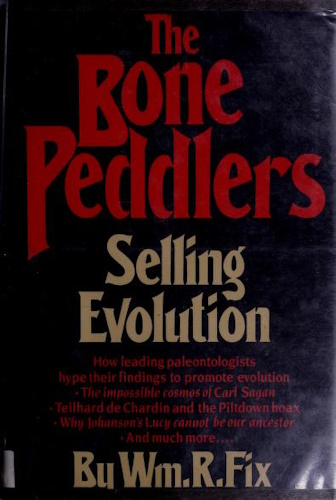

The Bone Peddlers: Selling Evolution

No details.
Hardcover: 337 pages
Publisher: Macmillan; 1st edition (April 1, 1984)
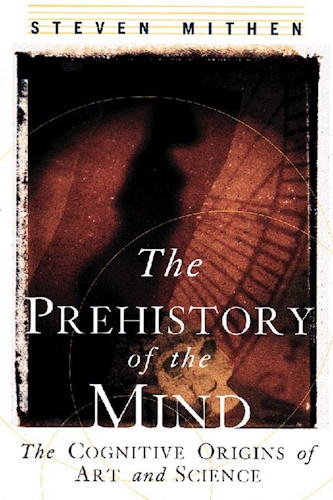

The Prehistory of the Mind: The Cognitive Origins of Art, Religion and Science

"A truly pioneering work, perhaps the first by a practicing archaeologist to review coherently the evolution of human cognitive abilities." ―Colin Renfrew, author of Before Civilization and Archaeology and Language
Here is an exhilarating intellectual performance, in the tradition of Roger Penrose's The Emperor's New Mind and Steven Pinker's The Language Instinct. On the way to showing how the world of our ancient ancestors shaped our modern modular mind, Steven Mithen shares one provocative insight after another as he answers a series of fascinating questions:
- Were our brains hard-wired in the Pleistocene Era by the needs of hunter-gatherers?
- When did religious beliefs first emerge?
- Why were the first paintings made by humankind so technically accomplished and expressive?
- What can the sexual habits of chimpanzees tell us about the prehistory of the modern mind?
This is the first archaeological account to support the new modular concept of the mind. The concept, promulgated by cognitive and evolutionary psychologists, views the mind as a collection of specialized intelligences or "cognitive domains," somewhat like a Swiss army knife with its specialized blades and tools. Arguing that only archaeology can answer many of the key questions raised by the new concept, Mithen delineates a three-phase sequence for the mind's evolution over six million years―from early Homo in Africa to the ice-age Neanderthals to our modern modular minds. The Prehistory of the Mind is an intriguing and challenging explanation of what it means to be human, a bold new theory about the origins and nature of the mind. 70 illustrations
Paperback: 288 pages
Publisher: Thames & Hudson; 1st edition (April 1, 1999)
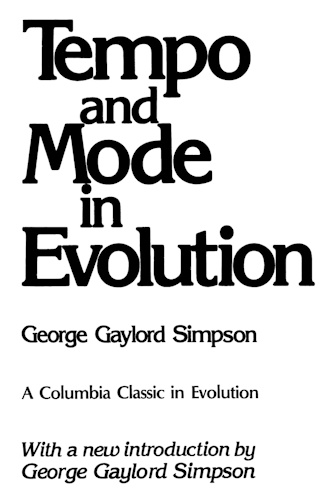

No details.
Paperback: 237 pages
Publisher: Columbia University Press; Columbia Classics edition edition (October 15, 1984)
![]()
![]()